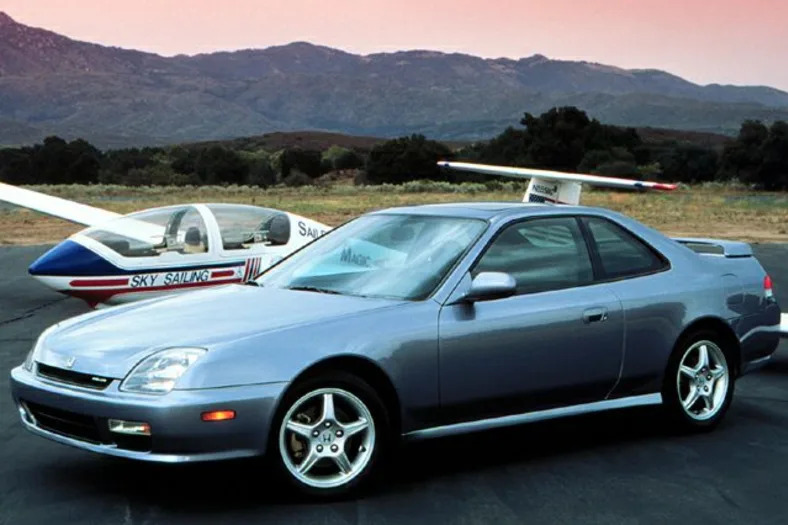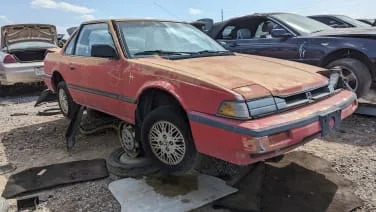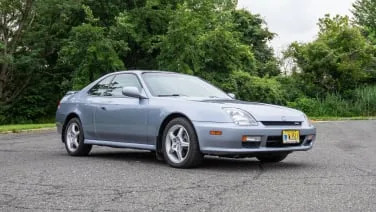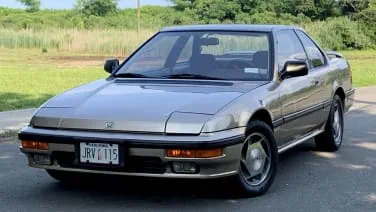1999 Honda Prelude
Autoblog wasn't around for the literal first drive review, but as they say, it's better late than never. Take a trip down memory lane in our latest retro first drive. “Designed to be an aggressive sports coupe with superior handling, the Prelude is intended to appeal to drivers who will appreciate its high level of performance and refinement,” the press release for the 1997 Honda Prelude reads. And that’s just the first sentence. Paragraphs and pages of technical details follow, all explaining why the Prelude’s new fifth-generation model was far superior to the already outstanding previous car. Maybe Honda product planners knew it at the time, or maybe they didn’t, but this was to be the last of many generations of Prelude. The audience was to be no different than before. The Prelude would remain a pricey two-door, aimed at buyers wanting something fun, but more mature, stylish and special than a Honda Civic Coupe. Superior handling with advanced handling technology played a pivotal part in past Preludes. For example, Honda’s four-wheel-steer system debuted in the Honda Prelude in the late 1980s. This new Prelude was no different in its pursuit of front-wheel-drive perfection, specifically, the Prelude Type SH. To solve a front-wheel-drive car’s natural tendency to understeer when powering out of corners, Honda introduced the Active Torque Transfer System (ATTS) for the new, range-topping Prelude Type SH. It’s no lame brake-based torque vectoring system, either. No, ATTS steers the car and increases the amount of torque going to the outside wheel to counteract that tendency to understeer. It’s rather complex, too. A battery of sensors collects all the necessary road and car information, then a computer determines how much torque should be applied and how much faster the outside wheel should rotate compared to the inside wheel. Torque is sent through a differential to a planetary gear set in the Moment Control Unit (this is the magical piece that multiplies the rotational speed) and then back through the differential to the outside wheel. The MCU is capable of raising the outside wheel speed by 15%, and the car is ultimately capable of sending up to 80% of the drive force to that outer wheel. There’s plenty of drive force to send to those wheels, too, because our 1999 Honda Prelude SH test car is packing a 2.2-liter naturally aspirated four-cylinder good for 200 horsepower and 156 pound-feet of torque. It has 5 hp more than the 1997 and 1998 model years, and oh yeah, it totally has VTEC. Redline isn’t as high as most VTEC-equipped Hondas, but this one still goes to 7,400 rpm. What it loses in revs, it makes up for in torque, as it’s a bit larger in displacement than other high-po Honda four-cylinders. Shifting is best taken care of by yourself with a five-speed manual transmission — the tight ratios keep the power on boil when shifted near redline. There was a four-speed automatic transmission available, but to this day, you lose 5 horsepower and …
Full Review
Autoblog wasn't around for the literal first drive review, but as they say, it's better late than never. Take a trip down memory lane in our latest retro first drive. “Designed to be an aggressive sports coupe with superior handling, the Prelude is intended to appeal to drivers who will appreciate its high level of performance and refinement,” the press release for the 1997 Honda Prelude reads. And that’s just the first sentence. Paragraphs and pages of technical details follow, all explaining why the Prelude’s new fifth-generation model was far superior to the already outstanding previous car. Maybe Honda product planners knew it at the time, or maybe they didn’t, but this was to be the last of many generations of Prelude. The audience was to be no different than before. The Prelude would remain a pricey two-door, aimed at buyers wanting something fun, but more mature, stylish and special than a Honda Civic Coupe. Superior handling with advanced handling technology played a pivotal part in past Preludes. For example, Honda’s four-wheel-steer system debuted in the Honda Prelude in the late 1980s. This new Prelude was no different in its pursuit of front-wheel-drive perfection, specifically, the Prelude Type SH. To solve a front-wheel-drive car’s natural tendency to understeer when powering out of corners, Honda introduced the Active Torque Transfer System (ATTS) for the new, range-topping Prelude Type SH. It’s no lame brake-based torque vectoring system, either. No, ATTS steers the car and increases the amount of torque going to the outside wheel to counteract that tendency to understeer. It’s rather complex, too. A battery of sensors collects all the necessary road and car information, then a computer determines how much torque should be applied and how much faster the outside wheel should rotate compared to the inside wheel. Torque is sent through a differential to a planetary gear set in the Moment Control Unit (this is the magical piece that multiplies the rotational speed) and then back through the differential to the outside wheel. The MCU is capable of raising the outside wheel speed by 15%, and the car is ultimately capable of sending up to 80% of the drive force to that outer wheel. There’s plenty of drive force to send to those wheels, too, because our 1999 Honda Prelude SH test car is packing a 2.2-liter naturally aspirated four-cylinder good for 200 horsepower and 156 pound-feet of torque. It has 5 hp more than the 1997 and 1998 model years, and oh yeah, it totally has VTEC. Redline isn’t as high as most VTEC-equipped Hondas, but this one still goes to 7,400 rpm. What it loses in revs, it makes up for in torque, as it’s a bit larger in displacement than other high-po Honda four-cylinders. Shifting is best taken care of by yourself with a five-speed manual transmission — the tight ratios keep the power on boil when shifted near redline. There was a four-speed automatic transmission available, but to this day, you lose 5 horsepower and …
Hide Full Review
Hide Full Review
Retail Price
$23,450 - $25,950
MSRP / Window Sticker Price
| Engine | 2.2L I-4 |
| MPG | Up to 22 city / 27 highway |
| Seating | 4 Passengers |
| Transmission | 5-spd man w/OD |
| Power | 200 @ 7000 rpm |
| Drivetrain | front-wheel |
| Curb Weight | 2,954 - 3,042 lbs |
Smart Buy Program is powered by 





